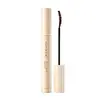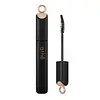What's inside
What's inside
 Key Ingredients
Key Ingredients

 Benefits
Benefits

 Concerns
Concerns

 Ingredients Side-by-side
Ingredients Side-by-side

Isododecane
EmollientTrimethylsiloxysilicate
EmollientCeresin
Emulsion StabilisingDisteardimonium Hectorite
StabilisingMicrocrystalline Wax
Emulsion StabilisingDextrin Palmitate/Ethylhexanoate
EmulsifyingHydrogenated Styrene/Isoprene Copolymer
CI 77499
Cosmetic ColorantPropylene Carbonate
SolventCI 77491
Cosmetic ColorantGlycine Soja Seed Extract
Skin ConditioningHydrogenated Polyisobutene
EmollientAluminum Distearate
Emulsion StabilisingDextrin Palmitate
EmulsifyingSilica Silylate
EmollientPolymethylsilsesquioxane
Nylon-66
Glyceryl Caprylate
EmollientTriethoxycaprylylsilane
Water
Skin ConditioningSilica
AbrasiveButylene Glycol
HumectantCI 77492
Cosmetic ColorantCI 77891
Cosmetic ColorantIsododecane, Trimethylsiloxysilicate, Ceresin, Disteardimonium Hectorite, Microcrystalline Wax, Dextrin Palmitate/Ethylhexanoate, Hydrogenated Styrene/Isoprene Copolymer, CI 77499, Propylene Carbonate, CI 77491, Glycine Soja Seed Extract, Hydrogenated Polyisobutene, Aluminum Distearate, Dextrin Palmitate, Silica Silylate, Polymethylsilsesquioxane, Nylon-66, Glyceryl Caprylate, Triethoxycaprylylsilane, Water, Silica, Butylene Glycol, CI 77492, CI 77891
Isododecane
EmollientTrimethylsiloxysilicate
EmollientTalc
AbrasiveCeresin
Emulsion StabilisingDisteardimonium Hectorite
StabilisingDextrin Palmitate/Ethylhexanoate
EmulsifyingMicrocrystalline Wax
Emulsion StabilisingCI 77499
Cosmetic ColorantPolypropylsilsesquioxane
Propylene Carbonate
SolventSilica
AbrasiveBambusa Arundinacea Stem Powder
AbrasiveOenothera Biennis Oil
EmollientBacillus/Soybean Ferment Extract
Skin ConditioningLactobacillus/Rye Flour Ferment
Skin ConditioningLactobacillus/Soymilk Ferment Filtrate
Skin ConditioningHydrolyzed Corn Protein
Skin ConditioningHydrolyzed Soy Protein
HumectantHydrolyzed Wheat Protein
Skin ConditioningOryza Sativa Extract
AbsorbentSesamum Indicum Seed Extract
Skin ConditioningGlycine Soja Seed Extract
Skin ConditioningRubus Fruticosus Fruit Extract
AstringentSaponaria Pumila Callus Culture Extract
Skin ConditioningWine
Skin ConditioningHydrogenated Polyisobutene
EmollientVp/Eicosene Copolymer
Aluminum Distearate
Emulsion StabilisingDextrin Palmitate
EmulsifyingPolymethylsilsesquioxane
Triethoxycaprylylsilane
Glyceryl Caprylate
EmollientWater
Skin ConditioningButylene Glycol
Humectant1,2-Hexanediol
Skin ConditioningGlycerin
HumectantPropanediol
SolventCaesalpinia Spinosa Gum
Skin ConditioningLecithin
EmollientMaltodextrin
AbsorbentPhenoxyethanol
PreservativeIsododecane, Trimethylsiloxysilicate, Talc, Ceresin, Disteardimonium Hectorite, Dextrin Palmitate/Ethylhexanoate, Microcrystalline Wax, CI 77499, Polypropylsilsesquioxane, Propylene Carbonate, Silica, Bambusa Arundinacea Stem Powder, Oenothera Biennis Oil, Bacillus/Soybean Ferment Extract, Lactobacillus/Rye Flour Ferment, Lactobacillus/Soymilk Ferment Filtrate, Hydrolyzed Corn Protein, Hydrolyzed Soy Protein, Hydrolyzed Wheat Protein, Oryza Sativa Extract, Sesamum Indicum Seed Extract, Glycine Soja Seed Extract, Rubus Fruticosus Fruit Extract, Saponaria Pumila Callus Culture Extract, Wine, Hydrogenated Polyisobutene, Vp/Eicosene Copolymer, Aluminum Distearate, Dextrin Palmitate, Polymethylsilsesquioxane, Triethoxycaprylylsilane, Glyceryl Caprylate, Water, Butylene Glycol, 1,2-Hexanediol, Glycerin, Propanediol, Caesalpinia Spinosa Gum, Lecithin, Maltodextrin, Phenoxyethanol
 Reviews
Reviews

Ingredients Explained
These ingredients are found in both products.
Ingredients higher up in an ingredient list are typically present in a larger amount.
We don't have a description for Aluminum Distearate yet.
Butylene Glycol (or BG) is used within cosmetic products for a few different reasons:
Overall, Butylene Glycol is a safe and well-rounded ingredient that works well with other ingredients.
Though this ingredient works well with most skin types, some people with sensitive skin may experience a reaction such as allergic rashes, closed comedones, or itchiness.
Learn more about Butylene GlycolCeresin is a wax derived from ozokerite. It is an alternative to beeswax.
The most common process of creating ceresin is by using heat and sulfuric acid.
Ci 77499 is also hydrated iron III oxide. It is created from mixing red and black iron oxides. This helps give shades of darkness to a product.
Iron III oxides are classified as inorganic chemicals for coloring.
Dextrin Palmitate comes from the palmitic acid ester of Dextrin. It is used as an emulsifier and texture enhancer.
Emulsifiers help keep ingredients together. According to a manufacturer, dextrin palmitate helps create a low-viscosity gel texture.
Due to its fatty acid base, this ingredient is not fungal-acne safe.
Learn more about Dextrin PalmitateThis ingredient is an emulsifier. It helps enhance the texture and stability of formulas.
The only manufacturer of this ingredient is in Japan. According to them, this ingredient reduces the tackiness and greasiness of products.
Dextrin Palmitate/Ethylhexanoate is created by reacting dextrin with a mixture of palmitoyl chloride and hexyldecanoic acid chloride.
Learn more about Dextrin Palmitate/EthylhexanoateDisteardimonium Hectorite comes from the clay mineral named hectorite. It is used to add thickness to a product.
It can also help stabilize a product by helping to disperse other ingredients.
Hectorite is a rare, white clay mineral.
Learn more about Disteardimonium HectoriteGlyceryl Caprylate comes from glycerin and caprylic acid, a fatty acid from coconut. It has emollient and emulsifier properties.
As an emollient, it helps hydrate your skin. Emollients work by creating a barrier on your skin to trap moisture in, helping to keep your skin soft and smooth.
On the other hand, emulsifiers prevent ingredients (such as oil and water) from separating.
Learn more about Glyceryl CaprylateGlycine Soja Seed Extract comes from the seed of the wild soybean plant. Wild soybean extract contains fatty acids (linoleic, oleic, linolenic), vitamin E, and antioxidants.
The wild soybean contains soyasaponins, a bioactive compound. Soyasaponins have inflammatory, antimutagenic, anticarcinogenic, antimicrobial properties. Soyasaponin has also been found to inhibit the melanin-creation process.
Two powerful components found in the wild soybean include genistein and diadzein. These two isoflavones are potent antioxidants with anti-inflammatory properties. Genistein in particular has been found to prevent redness caused by UV exposure.
One study from South Korea found wild soybean extract to help promote hair growth at the cellular level.
The wild soybean plant is a cousin to the famous soybean that gives us tofu, soy milk, and soy sauce.
Learn more about Glycine Soja Seed ExtractHydrogenated Polyisobutene is a synthetic polymer. Polymers are compounds with high molecular weight. Hydrogenated Polyisobutene is an emollient and texture enhancer.
In one study, Hydrogenated Polyisobutene showed better skin hydration levels than Caprylic/Capric Triglyceride. As an emollient, it helps keep your skin soft and hydrated by trapping moisture in.
Hydrogenated Polyisobutene is often used as a mineral oil replacement.
Learn more about Hydrogenated PolyisobuteneIsododecane is a fragrance, emollient, and solvent.
As an emollient, it helps your skin stay soft and hydrated. Emollients help trap moisture into your skin.
Isododecane's role as a solvent makes it a great texture enhancer. It spreads smoothly on skin and does not leave a sticky feeling behind. Isododecane also helps prevent color transfer in makeup products.
Isododecane is not absorbed into skin.
Learn more about IsododecaneMicrocrystalline Wax is created by de-oiling petroleum. It is highly refined and purified before being added to cosmetics.
Microcrystalline Wax is used to enhance the texture and create even consistency. It helps stabilize a product by preventing ingredients from separating.
Polymethylsilsesquioxane is a silicone used as a film forming agent.
When applied to the skin, this ingredient creates an invisible film on the surface. This film still allows oxygen to pass through, but prevents moisture from escaping. This can help condition and hydrate the skin. It also leaves a silky feel when applied.
Polymethylsilsesquioxane has not been shown to clog pores. It has been deemed safe to use up to 55%, but most cosmetics use much less.
If you have concerns about using this ingredient, we recommend speaking with a professional.
Learn more about PolymethylsilsesquioxaneThis ingredient is a solvent. It helps dissolve active ingredients and alter the texture of products.
Propylene Carbonate is commonly used in makeup and with clay, such as montmorillonite or bentonite.
Studies show this ingredient to be safe for cosmetics. When it is undiluted, it can cause skin irritation. (It is always diluted in skincare and makeup). This ingredient is water-soluble.
Propylene Carbonate is created from propylene glycol and carbonic acid.
Learn more about Propylene CarbonateSilica, also known as silicon dioxide, is a naturally occurring mineral. It is used as a fine, spherical, and porous powder in cosmetics.
Though it has exfoliant properties, the function of silica varies depending on the product.
The unique structure of silica enhances the spreadability and adds smoothness, making it a great texture enhancer.
It is also used as an active carrier, emulsifier, and mattifier due to its ability to absorb excess oil.
In some products, tiny microneedles called spicules are made from silica or hydrolyzed sponge. When you rub them in, they lightly polish away dead skin layers and enhance the penetration of active ingredients.
Learn more about SilicaTriethoxycaprylylsilane is a silicone used to bind and stabilize ingredients.
As an emulsifier, it helps prevent ingredients from separating. This can help elongate the shelf life of products.
Triethoxycaprylylsilane is often used to coat mineral sunscreens ingredients to help give a better feel. It also helps reduce oxidative stress in sunscreens.
Learn more about TriethoxycaprylylsilaneThis silicone is an emollient. Emollients create a thin film on the skin to prevent moisture from escaping.
It is not soluble in water and helps increase water-resistance in products.
According to a manufacturer, it can blend seamlessly with silicone oils, such as Cyclopentasiloxane.
Learn more about TrimethylsiloxysilicateWater. It's the most common cosmetic ingredient of all. You'll usually see it at the top of ingredient lists, meaning that it makes up the largest part of the product.
So why is it so popular? Water most often acts as a solvent - this means that it helps dissolve other ingredients into the formulation.
You'll also recognize water as that liquid we all need to stay alive. If you see this, drink a glass of water. Stay hydrated!
Learn more about Water